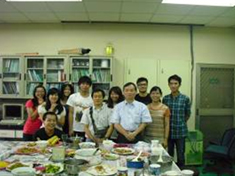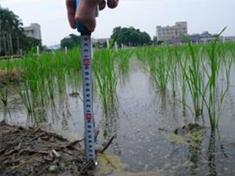Report
Overseas Field Training:An exercise of modeling and monitoring for pesticide fate and transport under the tropical meteorological condition in Taiwan
 |
 |
|||
| Pic 1 shows the scene of the lunch party after discussion for the monitoring and modeling plan with NCHU | Pic 2 shows the field observation for paddy water management at Agricultural Research Institute, Council of Agriculture, Executive Yuan |
Place : National Taiwan University and National Chung Hsing University, Taiwan
Date : 17-25 August 2010
<Report by Kei Kondo>
The destination of this field training was Taiwan from August 15 to August 25. The objectives were to design laboratory and field experiments and simulate their results using simple kinetic model to obtain physicochemical parameters of target pesticide with a consideration of double-crop cultivation in Taiwan and to develop whole water management scenario of double crop rice production including non-irrigated periods in Taiwan. We first went to National Taiwan university located in Taipei. In there, we visited two laboratories, pesticide environmental toxicology laboratory (Dr. Jui-Hung Yen) and Biosystems Modeling and Control Laboratory belonging Department of Bioenvironmental Systems Engineering (Dr. Chung-Min Liao). After that, we moved and stayed at Taichung until last day. Main purpose in there was that we discussed above objectives with Laboratory of Weed Science and Herbicide (Dr. Ching-Yuh Wang), Department of Agronomy, National Chung Hsing University (NCHU). In actual paddy field in Taiwan, pesticide management practices such as water holding practice after pesticide application which famer tries not to irrigate and drainage into paddy plot during this period was not much spread compared to Japan. This might be because temperature control in paddy plot was prior factor for famers and irrigation and drainage practice were more important practices to increase yields. From these actual surroundings, we found that pesticide surface runoff was more significant factor for pesticide exposure issue. Based on aforementioned results, we discussed experiment results and exchanged information on how we can perform and investigate pesticide behavior under the condition assumed Taiwan’s meteorological condition in Japan
Supervisor / Instructor and students traveled with :
Hirozumi Watanabe